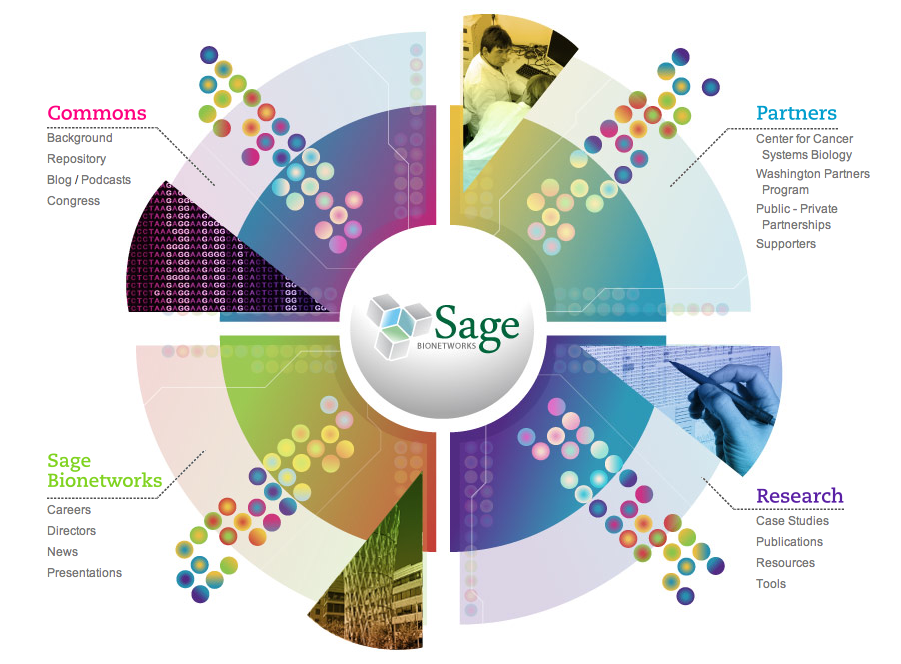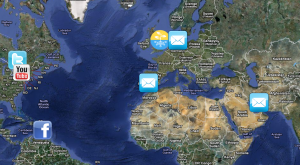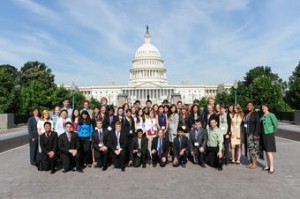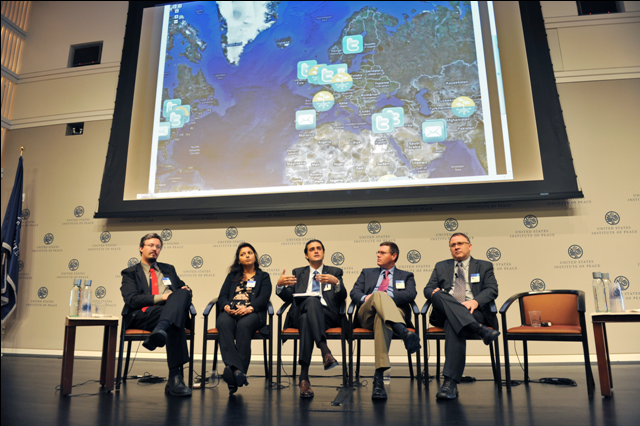The end of September 2011 witnessed scattered renewed protests in Sudan against the hike in prices of food and other basic necessities. There is hope that these “food protests” can be a game changer for Sudan’s citizens if we take the time to learn from recent mistakes and from the successes of others.
(more…)
Year: 2011
Cross-posted from The Stanford Social Innovation Review by Roshan Paul and Alexa Clay
This is the second in a series of interviews where we speak with leading innovators who are appropriating lessons from open source thinking—once purely the domain of the software engineer—for social change.
Stephen Friend is an Ashoka Fellow in the United States working to transform the culture and practice of closed information systems present in biomedical research to align with and support health outcomes by establishing a commons. He is president of Sage Bionetworks. (more…)
Cross-posted from The Stanford Social Innovation Review by Roshan Paul and Alexa Clay
This is the first in a series of interviews where we speak with leading innovators who are appropriating lessons from open source thinking—once purely the domain of the software engineer—for social change.
We first met Stephen Song through the Ashoka Globalizer program, where he helped us develop our framework for thinking about how to scale social innovation through an open source approach. Stephen is the founder of Village Telco, a social enterprise that aims to make starting a telephone company as easy as starting a blog.
(more…)
How do you turn a panel discussion in Washington, DC into a global conversation?
On Friday September 16, TechChange partnered with the U.S. Institute of Peace (USIP) Center of Innovation: Science, Technology, and Peacebuilding and George Washington University (GWU) to host the online portion of an event on Sifting Fact from Fiction: The Role of Social Media in Conflict. The event featured some of the leading Twitterati, policy makers, and social media experts, including Alec Ross, Andy Carvin, Jillian York, and others.
Adults and adolescents with Atopic Dermatitis in the USA, expectant mothers in Ghana, young teachers in Finland and pharmacists in Uganda all have one thing in common, they are part of the growing mobile learning community, or mLearning. Educators use cell phones, PDAs, laptops, and other mobile devices to reach students who are mobile, are isolated, lack internet access, or have limited resources for travel but have a mobile phone. mLearning in action. When 90% of the world’s population has access to a mobile phone, according to the International Telecommunication Union, it is no surprise that educators have already realized the potential of mobile devices to enhance and extend the classroom.
Adults and adolescents with Atopic Dermatitis in the USA received information and medication reminders via text (or SMS) from Massachusetts General Hospital. Throughout the study, 96% of the participants changed at least one behavior after receiving informational texts about self-care practices. These patients are not alone in their improved health behavior due to educational texts. In Kenya, patients undergoing Advanced Retroviral Therapy for HIV received text reminders about their dosage and appointments and had positive behavioral change related to their adherence to their treatment in a recent study. Expectant mothers in Ghana received voice and text messages regarding self-care during pregnancy and the care of their children. But sure, mobile phones can help adherence to medication regimens, improve information about healthcare and self-care and serve as reminders of appointments, but what about extending the more traditional classroom? (more…)
 We’re excited to announce that we’re partnering with the U.S. Institute of Peace (USIP) for this Friday’s event (9/16) on Sifting Fact from Fiction: The Role of Social Media in Conflict. Held in Washington, DC, this event will examine the power of social media for change by bringing together experts, activists, and policy-makers to look at cutting-edge tech for conflict management and peacebuilding.
We’re excited to announce that we’re partnering with the U.S. Institute of Peace (USIP) for this Friday’s event (9/16) on Sifting Fact from Fiction: The Role of Social Media in Conflict. Held in Washington, DC, this event will examine the power of social media for change by bringing together experts, activists, and policy-makers to look at cutting-edge tech for conflict management and peacebuilding.
Events of global importance should include a global audience. To complement the event’s live webcast, we’re spending this week aggregating questions from you, the online audience, in Tweets, anonymous emails, and YouTube videos. We’re also collecting questions from the 46 students from 26 countries in our online class Tech Tools for Emergency Management, and we want to hear from you! Once we get your input, we’ll put it on our live Participation Map, which will be featured during the event.
Ask NPR’s Andy Carvin about tweeting revolutions in the Middle East, the State Department’s Alec Ross about the new front on US Digital Diplomacy, the EFF’s Jillian York how Egyptian and Tunisian youth hacked the Arab Spring. That’s right, we’re crowdsourcing questions for Clay Shirky of Here Comes Everybody, while keeping it short enough for Brian Eoff of Bit.Ly. John Kelly of Morningside Analytics will map out the online discussion, and social media experts Marc Lynch (@abuaardvark) and Sultan al-Qassemi (@SultanAlQassemi) will reality check it.
What are you waiting for? There are four easy ways to participate:
- Email your question and location to chris@techchange.org with “Question” as the subject. Please note if you want your question to be anonymous.
- Tweet your question and location with #USIPBlogs and we’ll post it right away. (Sample: Question from #location for @panelist. #USIPBlogs)
- Post it in the comments section below
- Film a video question and upload it to YouTube. Send us the link via either of the two methods listed above.
Looking forward to hearing from you!
– The TechChange Team
We’re excited to start our online course on TC103: Tech Tools and Skills for Emergency Management. We have an incredible group of participants enrolled in the course: 46 people working in 26 countries from organizations like Mercy Corps, UNDP, Voice of America, Concern.net, German International Cooperation, Inter-American Development Bank, African Union Commission, World Pulse Media, SpanAfrica, World Vision, Plan International and more. From professors to practitioners, policy makers to first responders, you all represent an amazing cross-section of people on the front lines of emergency management. We will also have 6 small group moderators and three guest experts supporting our learning for the course including Patrick Meier of Ushahdi and Laura Hudson Walker of FrontlineSMS.
 I had the opportunity last fall to ghost write the background paper for the U.S. Institute of Peace’s Study Guide on “The Impact of New Media on Peacebuilding and Conflict Management.” This will be used for USIP’s annual high school essay contest and can be downloaded at: http://www.usip.org/programs/initiatives/national-peace-essay-contest
I had the opportunity last fall to ghost write the background paper for the U.S. Institute of Peace’s Study Guide on “The Impact of New Media on Peacebuilding and Conflict Management.” This will be used for USIP’s annual high school essay contest and can be downloaded at: http://www.usip.org/programs/initiatives/national-peace-essay-contest
Mobile phones remain vital for reaching the masses in the Middle East (as discussed in a previous post), but what’s less clear is what to do once you have them on the line. As mobile penetration rates continue to climb, the next challenge will be training and organizing networks to crowdsource shared problems. On Sunday, August 21, TechChange and Souktel held a training in Ramallah to explore how applying tools for mass SMS and crowdmapping could play a role in community organizing and crisis response. The training consisted of three modules: 1) Simulation of directing ambulances through checkpoints after a major attack; 2) Creating a new Ushahidi map and thinking strategically about its application; and 3) Registration for the Standby Task Force. (more…)
Cross-posted from the USAID GBI blog.
Google’s Sub-Saharan Africa office is funding a project by Steve Song to create a comprehensive map of all terrestrial broadband fibre-optic cables in Africa. Using crowdsourcing methods and contacts within the ICT4D space, Song is spearheading an effort to convince governments and telecoms that it is in their own interests to make public where they have laid terrestrial broadband cables. The project is named AfTerFibre (Africa’s Terrestrial Fibres).
AfTerFibre, which started in June, is currently building its network of contacts, engaging governments and telecoms in conversation regarding the location of their cables. In an effort to be as public and open as possible, Song has organized a public google group to collect the information. As the group makes agreements and collects data, they will incrementally publish an updated map of Africa’s terrestrial cables, hopefully one about every two months. Then, next summer, they hope to publish the completed map.


